For many outdoor enthusiasts, canoeing on a sunny afternoon is the perfect adventure. Finding the best wood for your canoe paddle can make a massive difference in your experience. Though modern paddles use materials like carbon fiber, fiberglass, and aluminum, a traditional wooden canoe paddle is still popular for paddlers looking for that one-of-a-kind feel and look. In my opinion, a well-made wooden canoe paddle performs better than any other type. Keep reading to learn what I consider the best wood for canoe paddle construction.
In my experience, the best wood for canoe paddles is ash wood because it offers higher resilience to abrasion, shock, and decay. In addition, ash wood is reasonably priced, making it an affordable choice for beginners and enthusiasts alike.
If you’re a canoe enthusiast, you know that gambling with the wrong paddle can affect your performance, whether you’re gently paddling on a calm lake or braving some class IV white water.
A big part of finding the right wooden paddle is making sure it is made of the same material.
Today, I’ll look at some wood paddle materials, revealing their pros and cons. Additionally, I will give you a few tips on identifying which wood paddle works for you.
Types of Wooden Paddle Material
It is essential to know the properties of different wood species and how they can affect the functionality and durability of a canoe paddle.

So, let us look at common species used in paddle and oar creation and their suitability for your next canoe trip.
RELATED: Kayaking vs Rowing Comparison (they’re different, here’s how)
Ash
Ash paddles are some of the most common paddles in the market. Ash is a straight-grained hardwood tree with strong properties making it resistant to abrasion and shock.
Ash wood is ideal for all-rounded paddles during smooth or demanding waterways.
It is also worth noting that ash wood is affordable, making it an ideal choice for beginners, long-term water riders, extreme water sports participants, and rental places.
On the other hand, ash trees can be relatively heavier than other species on this list. For this reason, paddling is more challenging for most beginners before they adjust.
Walnut
Walnut wooden paddles are excellent choices for canoe enthusiasts looking for sport-grade equipment. The hardwood trees have rigid and straight grains, providing strength and stiffness to the paddle.
The paddles are more durable and resistant to wear and decay, able to take on a range of paddling conditions.
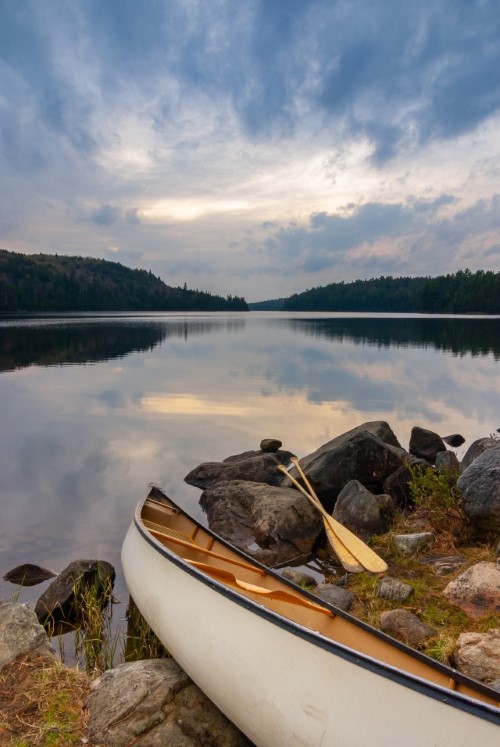
Walnut wood also has a light to dark brown grain pattern. So, the wooden paddles have an elegant and sophisticated appearance, whether used as a one-piece, multilayered, or laminated paddle.
Walnut wooden paddles are sturdy, but they also come with extra weight. Like most hardwood trees, walnut is denser, making it hard to maneuver, especially during extended paddling periods.
Additionally, walnut paddles are more expensive than most wooden options. Premium wood obtained from walnut trees costs more, leading to higher prices.
Basswood
Basswood is also another common wood used in making canoe paddles. The species is light and soft, making its paddles easier to carry and more maneuverable. Likewise, basswood wooden paddles are inexpensive, making them ideal for canoeing hobbyists.
However, basswood can easily warp over time due to its soft wood nature. Its paddles also have low abrasion and shock resistance, leading to breakage or damage under extreme conditions.
Cedars
Cedars are softwood trees that make lightweight wooden paddles ideal for easy maneuvering during water exploration. It offers effortless handling for extended trips and beginners.
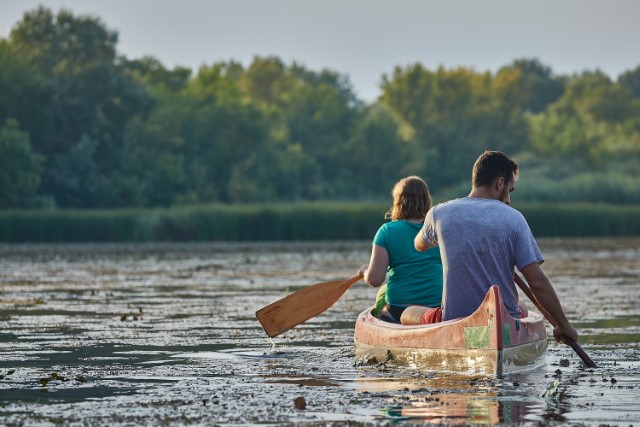
Likewise, depending on the cedar species, the wood has either a white or reddish grain pattern. Cedar wooden canoe paddles can showcase these patterns adding an elegant touch during your canoeing trips.
However, cedar wood tends to be less durable due to its softwood nature. The wooden paddles have a low resistance to shock and abrasion.
They are vulnerable to surface damage and can easily break when navigating aggressive currents or rocky waters.
Cherry
Cherry is a hardwood species that offers durability and longevity when making canoe paddles. It has straight grains that protect from shock and abrasion on your adventure.
These are also a favorite for most canoeing enthusiasts due to their deep reddish brown and golden luster that darkens over time.
Furthermore, the cherry wooden paddles are more flexible. The flexibility helps absorb shock, making paddling more effortless.
Though cherry canoe paddles are lighter than ash, they are heavier than most softwood paddles. Riders that mind the weight can choose multilayered cherry and other softwood paddles, giving it more durability.
Maple
Maples also fall under hardwood trees. Maple wooden paddles are stronger, harder, and stiffer, making them more resilient to wear and abrasions.
The paddles’ durability also enhances shock resistance, making them ideal for harsh water conditions.
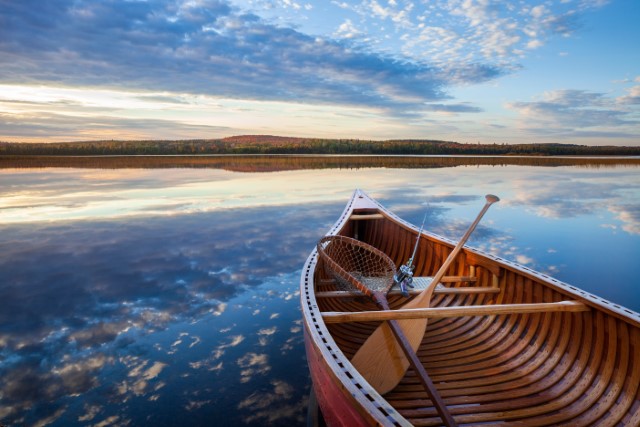
Likewise, maple paddles are softer than most hardwood paddles. It makes them more flexible without sacrificing sturdiness. Therefore, paddling is smoother, enhancing your canoeing experience.
On the other hand, maple wooden paddles are denser than softwood options, making them slightly heavier. While this might enhance their longevity and wear resistance, it can take a toll on beginners and riders paddling for a long time.
Spruce
Lastly, spruce is popular in canoe paddle-making. The softwood paddles are lightweight and ideal for paddling long distances.
The spruce wooden paddles are well-balanced, enhancing handling during canoeing.
Spruce canoe paddles are also more flexible during paddling sessions. Better flexibility improves maneuverability and gives you smoother paddling strokes in the process.
Likewise, it enhances overall paddling performance, reducing fatigue.
However, spruce paddles have less durability than most hardwoods like maple, ash, or walnut paddles. They are more suitable for calm water conditions as harsh conditions can cause damage.
Additionally, spruce paddles have a low resistance to decay and some preservation treatments. These paddles rot under improper storage, weakening their structural integrity and reducing lifespan.
How to Choose the Best Wood for Canoe Paddle
Now that we have looked at some standard wooden canoe paddle choices, how do you decide what to buy?
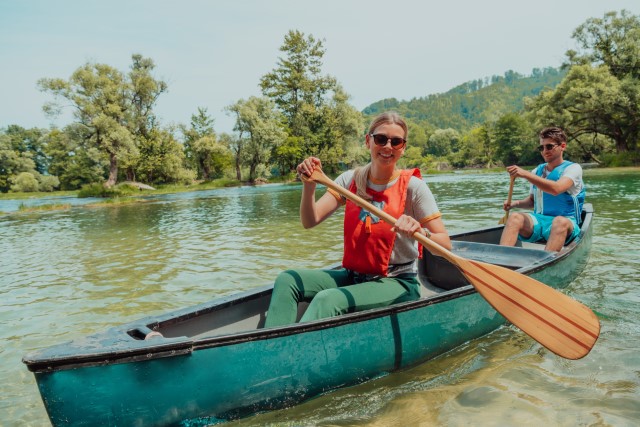
Before you can buy a canoe paddle, consider the following factors:
Durability
The first thing to consider when buying a wooden paddle is its durability. As we observed, the material can determine how long your paddle will last and in what conditions.
Your best option is to find a wooden paddle that can withstand pressure and stress without breaking. The paddle should also resist shock, abrasion, and warping, and it should be the appropriate size for you.
Durable canoe paddles have a longer lifespan, which can be more cost-effective in the end run!
Weight
Secondly, the paddle’s weight also affects your canoeing experience.
Lighter wooden paddles will provide easier maneuvering and handling, especially for beginners and hobbyists. They are easier to lift and control, reducing exhaustion.
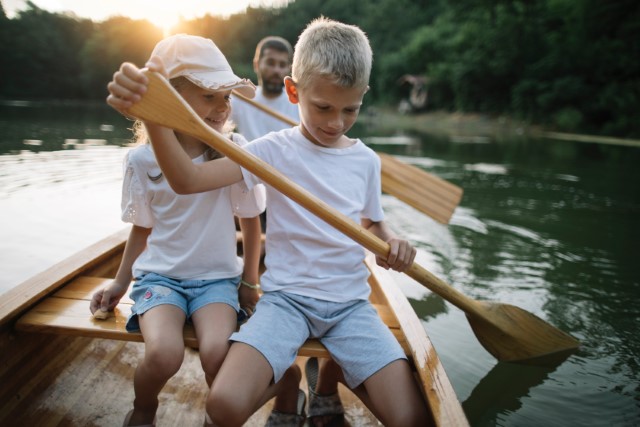
Likewise, lighter wooden canoe paddles provide quicker recovery. Reducing the paddle’s impact on the water’s surface results in faster and more natural paddling.
Versatility and Performance
Another thing to consider is the paddle’s versatility. You need a paddle that adjusts to different water conditions.
Whether in calm lake water or rafting in rough rivers, the paddles should adapt to differences without compromising performance or durability.
Versatility also reduces the investment cost for other paddles. Versatile wooden paddles are ideal for most conditions and eliminate the need for multiple paddle purchases for different waterways.
Performance is another crucial factor to keep in mind before making a purchase. Hardwood canoe paddles are excellent for white water rafting, while softwood paddles are suitable for leisurely cruises in lakes and rivers.
Additionally, the duration and frequency of use affect a paddle’s performance. If you spend too much time paddling, you expose the wood to harsher conditions, leading to faster wear and tear.
Getting a shock and abrasion-resistant wooden paddle is your best bet.
Flexibility
A paddle’s flexibility can also affect its performance and maneuverability. Flexibility influences a paddle’s efficiency when in contact with water.
With better efficiency, riders use less energy and effort during water exploration.
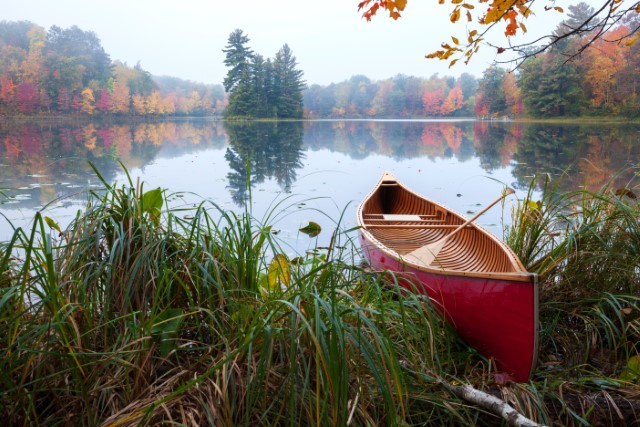
Flexible wooden paddles dampen vibrations, shock, and water resistance while paddling. It results in a comfortable canoeing experience, especially in rough or extreme water conditions.
Aesthetics
Paddle aesthetics is the last thing on the list. While a paddle’s visuals are significant, quality and safety should always come first.
That said, the oar’s aesthetic feel can also impact your paddling experience. A paddle that’s easy on the eyes enhances your motivation and mindful engagement.
It can also contribute to your identity as a canoeing enthusiast.
In a Nutshell
Traditional wooden canoe paddles will always be in style. You have the choice of a hardwood or softwood canoe paddle for explorations.
Hardwood paddles made from ash, cherry, walnut, and maple are more durable and stronger. On the other hand, softwood paddles made from basswood, cedar, and spruce are more lightweight and flexible.
Before deciding on which is the best wood for a canoe paddle, there are a few factors that you need to take into consideration. They include the paddle’s durability, weight, and versatility.
Furthermore, you should consider the paddle’s flexibility and aesthetics.
If you aspire to take on white water rafting, you need a wooden paddle that can take the punch and resist wear and tear. On the other hand, you need a lightweight oar for leisure cruises around the lake or in calm river currents.
So, now that you know all about canoe paddles, you are ready to join the ranks of avid adventurers in the lakes and rapids. Happy shopping, and I will see you on your next adventure!


